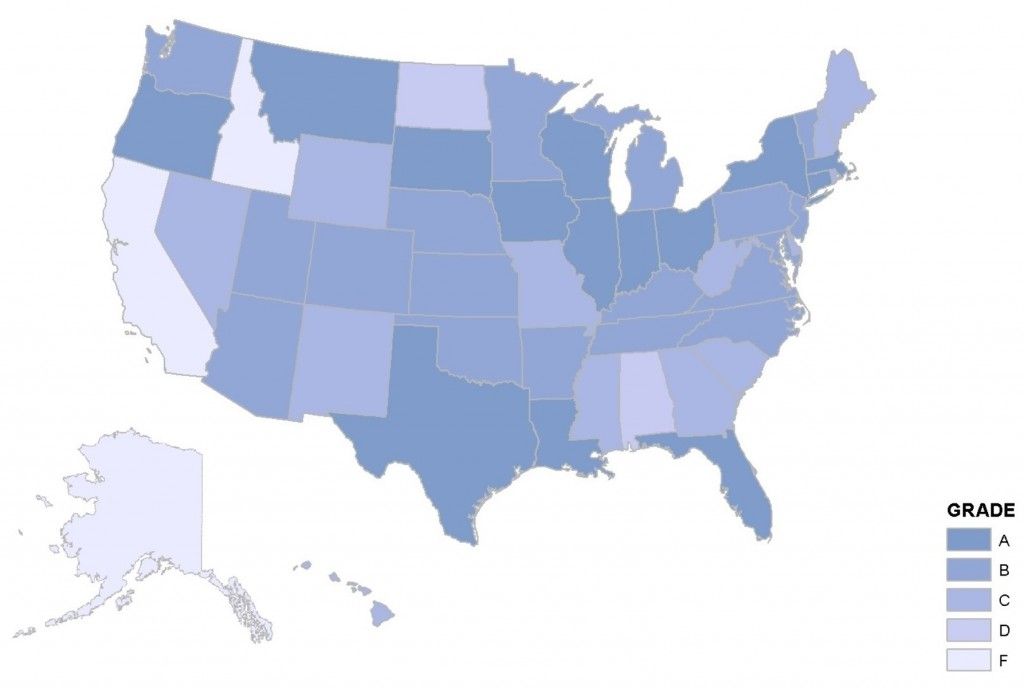Study: CA ranks last in spending transparency
by Steve Miller | March 24, 2015 7:36 am
 California ranked at the bottom for the second consecutive year on the annual report[1] on state government transparency compiled by the Public Interest Research Group, an investigative and advocacy organization based in Boston. And the state’s beleaguered Department of Technology[2], or CalTech, can be assigned part of the blame for the last-place showing.
California ranked at the bottom for the second consecutive year on the annual report[1] on state government transparency compiled by the Public Interest Research Group, an investigative and advocacy organization based in Boston. And the state’s beleaguered Department of Technology[2], or CalTech, can be assigned part of the blame for the last-place showing.
The rankings on PIRG’s sixth annual report are based on an assessment of each state’s open data and the ease with which users – the public, media and policymakers – can navigate the information and draw conclusions about how the money is being spent.
“There used to be a designated transparency portal for California,” said Phineas Baxandall, a PIRG senior policy analyst. “At some point during the Schwarzenegger administration, they pulled the plug on it and ended the program. There was going to be a major IT overhaul integrating the whole state government that would bring in data from the controller’s office, the governor’s office, every state office.” Arnold Schwarzenegger was governor from Nov. 2003 to Jan. 2011.
The report presents costs associated with making and maintaining a transparency-friendly website, which California has not responded to since 2012.
In the 2012 PIRG report[3], the state estimated a set-up price tag of $200,000, with a $169,400 annual operating cost for the now defunct www.transparency.ca.gov[4]. In 2011, his first year back in office, Gov. Jerry Brown shut down the website because the information was available elsewhere. “But open government advocates have objected to the move, saying it will make it more difficult for citizens to track spending,” the Sacramento Bee reported [5]at the time.
A state’s coffers don’t have a lot to do with the ability or willingness of that state to provide the taxpayers the information they deserve. “California has the largest revenue and expenditure of any state, yet received 34 points, the lowest score” of a possible 100, the report said. That translated to an “F” grade.
The top ranking states were Ohio at 100, Indiana at 97, Wisconsin and Oregon at 96.5 and Louisiana at 96; all were “A” grades. The following map shows the transparency of all 50 states, with the darker shades most open to scrutiny.

2015 rankings for public data transparency
Fragmentation
PIRG also noted California…
“is weighed down primarily by bureaucratic fragmentation of its information. While the state has made some interesting and useful data sets available to the public — including, for example, one documenting spending at the county level — California does not succeed in creating a ‘one-stop’ transparency portal. For example, the state produces tax expenditure reports and publishes data on the Film and Television Production Incentive, but these are not available via a central transparency website, making this valuable information difficult to find for citizens and others who may not already know where to look. It would be relatively easy for California to substantially improve its score by providing clear links to sources of data from a central website.”
Public data is being increasingly placed online by states and there has been a push in California to put more of the state’s spending as well as tax revenues and compilations of information from state agencies in a form that can be easily understood.
But even the state’s attempt to create a decent portal for open data delivery was criticized by PIRG. The primary place for the public to sift through information is listed in the study as the Department of General Services site[6]. PIRG found “the state does maintain a central data hub at http://data.ca.gov/[7] that can be more readily considered a ‘transparency portal,’ but it was not evaluated for purposes of this report because it fails to score better than the website we evaluated.”
Failures
CalTech, which had 121 employees with salaries over $100,000 last year,[8] has been lampooned for its failures over the years. In 2013, a $371 million plan to upgrade the state’s payroll system was suspended[9] after $254 million was spent.
A week later, a $208 million project to modernize the state’s Department of Motor Vehicles was canned[10] after seven years and an outlay of $135 million.
The state Task Force on Reengineering IT Procurement for Success came out with a study[11] of the department’s follies in procurement that included posting status updates of projects that are in progress, “helping to increase vendor accountability.”
Audit
An audit[12] of CalTech released last week by state Auditor Elaine M. Howle included criticism of the agency’s ability to calculate the status of current projects. It made no mention of publicly posting that information.
The audit is a 50-page lambasting of the department and opens by noting “the state has a history of failed IT projects — between 1994 and 2013, for example, the state terminated or suspended seven IT projects after spending almost $1 billion.”
Regarding the department’s work on posting information that can be dissected by taxpayers, the study noted, “CalTech needs to revisit its guidance to sponsoring agencies for creating their status reports and its procedures for reviewing and approving status reports to ensure that projects present meaningful information to the public.”
In the agency’s response to the audit, CalTech Director Carlos Ramos agreed with all nine recommendations for improvements.
Legislation introduced in February[13] by state Sen. Richard Pan, D-Sacramento, would create a chief data officer to be appointed by the governor. The officer would work with CalTech in creating a way to provide public information online and at the ready.
“Maybe one of these days, the state will unveil this great it system and it will be so impressive and their rating will improve,” said Baxandall, the policy analyst at PIRG. “But until then, we’re in the dark.”
Steve Miller can be reached at 517-775-9952 and [email protected][14]. His website is www.Avalanche50.com[15]
- annual report: http://uspirg.org/sites/pirg/files/reports/Following%20the%20Money%202015%20vUS.pdf
- Department of Technology: http://www.cio.ca.gov/
- 2012 PIRG report: http://www.uspirg.org/sites/pirg/files/reports/Following%20the%20Money%20vUS%20WEB.pdf
- www.transparency.ca.gov: http://www.transparency.ca.gov/default.aspx
- reported : http://blogs.sacbee.com/capitolalertlatest/2011/11/jerry-brown-shuts-down-california-government-transparency-website.html
- Department of General Services site: http://www.dgs.ca.gov/dgs/Home.aspx
- http://data.ca.gov/: http://data.ca.gov/
- 121 employees with salaries over $100,000 last year,: http://www.sacbee.com/site-services/databases/state-pay/#req=employee%2Fsearch%2Fyear%3D2014%2Fdepartment%3DDept%2520Of%2520Technology%2Fpage%3D6%2Fsort%3Dpay%2Fdirection%3D-1
- was suspended: http://www.computerworld.com/article/2494827/it-management/california-ends-contract-with-sap-over-troubled-it-project.html
- was canned: http://articles.latimes.com/2013/feb/14/local/la-me-dmv-project-20130215
- a study: http://www.sco.ca.gov/Files-EO/0813_IT_Task_Force_Recommendations.pdf
- An audit: http://www.bsa.ca.gov/pdfs/reports/2014-602.pdf
- Legislation introduced in February: http://www.leginfo.ca.gov/pub/15-16/bill/sen/sb_0551-0600/sb_573_bill_20150226_introduced.pdf
- [email protected]: mailto:[email protected]
- www.Avalanche50.com: http://avalanche50.com/
Source URL: https://calwatchdog.com/2015/03/24/study-ca-ranks-last-in-spending-transparency/